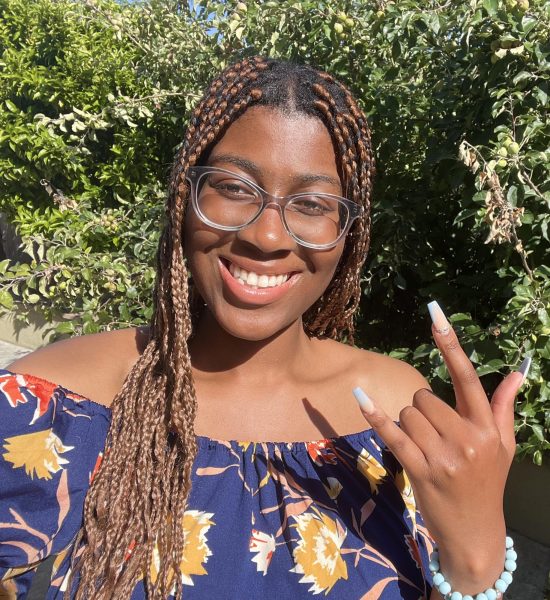A Comprehensive Guide on LGBTQ+ Terms
 “SCOTUS APRIL 2015 LGBTQ 54663” by tedeytan is licensed under CC BY-SA 2.0
“SCOTUS APRIL 2015 LGBTQ 54663” by tedeytan is licensed under CC BY-SA 2.0
In the 21st century, the LGBTQ+ community is more inclusive than ever, encompassing individuals who identify differently from “the norm” in terms of gender, romantic, and/or sexual identity. However, inclusivity and diversity entail several labels and micro-labels that leave people outside the community scratching their heads.
The name of the community even changes from person to person. These include: LGBT, LGBT+, LGBTA, LGBTA+, LGBTQ, LGBTQ+, LGBTQIA, LGBTQIA+. Some even eschew the name completely for a simpler one: GRSM, an acronym for Gender, Romantic, Sexual Minorities. The name avoids the word “queer,” which many in the community still see as a slur.
So, for brevity’s sake, this article will only cover basic terms that every ally should know.
Believe it or not, there are multiple kinds of attractions and orientations describing those attractions. The terms used here pertain to romantic and sexual orientations, as to include a-spec and aro-spec. Biromantic asexual refers to someone who is romantically attracted to two or more genders and sexually attracted to none. This applies conversely to aromantic bisexuals.
Lesbian is a term that describes women loving women and non-binary people loving women. It refers to gay women. Sapphic is a modern word—derived from the Greek poet Sappho—that describes non-men loving women.
While gay refers to attraction toward the same gender, it also refers to a gay man. Someone who is homoromantic is romantically attracted to the same gender. Homosexuals are sexually attracted to the same gender.
Biromantic (biro) describes someone who is romantically attracted to more than two genders. People on the asexual spectrum (a-spec) use this term to describe their romantic orientation. Someone who is bisexual (bi) is sexually attracted to more than two genders, including their gender or not.
Panromantic individuals are romantically attracted to all genders and can be considered “gender blind.” Pansexuals (pan) are sexually attracted to all genders.
A transgender (trans) person is someone who identifies differently from their birth-assigned gender. Most of the time, the term refers to binary transgender people: trans men and trans women. Not all non-binary, trans people label themselves as trans.
Non-binary (enby or nb) people’s gender does not fit within the gender binary (not 100% male or 100% female). Instead, they identify themselves on some part of the gender spectrum. While non-binary is a gender label, it is also an umbrella term for anyone who doesn’t fit the gender binary. Not all non-binary people use they/them pronouns. Some include she/her, he/him pronoun, and or neopronouns.
In recent years, the LGBTQ+ community reclaimed queer. It was a slur used against those attracted to the same-sex. Queer is now an umbrella term for those who are not heteroromantic, heterosexual, or cisgender (cishet). However, not everyone is comfortable with using the word.
Questioning is the process of figuring out your romantic and sexual orientation or gender identity. It can last for as long or as short as possible.
Intersex refers to people unable to be exclusively classified as male or female because of genetic variations. Some had surgeries performed on them at birth to fit the gender binary (male or female). They can identify as cisgender or transgender or label themselves with any gender identity.
Anyone who identifies on the asexual spectrum is “a-spec.” An asexual (ace) is someone who experiences little to no sexual attraction. They tend to fall under the categories of sex-ambivalent, sex-favorable/sex-positive, sex-indifferent, or sex-repulsed. Not all asexuals are aromantic, but some are. They can identify with any romantic orientation like panromantic, biromantic, homoromantic, etc.
People on the aromantic spectrum are “aro-spec.” An aromantic (aro) person experiences little to no romantic attraction or the desire to be in a romantic relationship. Aromantics can
An ally is anyone who supports the LGBTQ+ community. Some closeted members of the community identify as allies to avoid being outed.
Someone who is “closeted”, or “in the closet”, is not public or “out” about their sexuality. Coming out of the closet is a life-changing experience for queer people since the LGBTQ+ community is not widely accepted. The closeted person’s friends and family might abandon them and even experience violence. In some cases, the closeted person does not get to choose when they come out of the closet. They might be “outed.” If someone is outed, they are forced out of the closet, and their gender identity or orientation is exposed.
A cisgender person’s gender identity aligns with their assigned sex or gender assigned at birth.
Heteromantic is used to describe those who are only romantically attracted to the opposite gender. Heterosexual refers to those who are only sexually attracted to the opposite gender.
The terms “alloromontic” and “allosexual” describe people who experience romantic and/or sexual attraction.

“For a second, I was thinking that I might write 5 articles this time. Then I reminded myself that I'm weak and can't handle it.”
Maya Nneoma Adimora...
